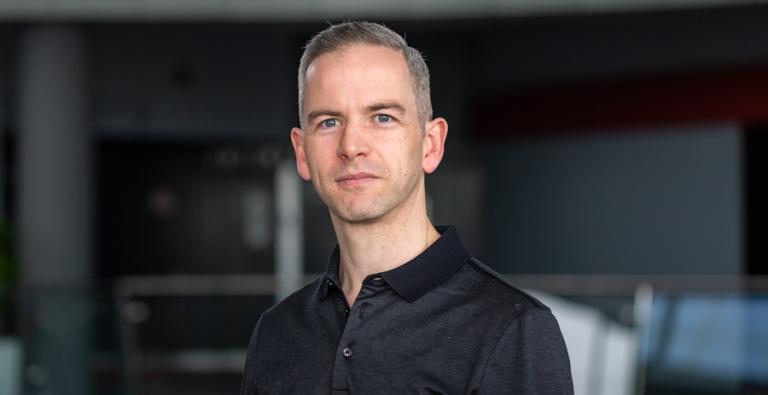

Spotlight on research- 3D materials to control the shape of water
This week's Spotligh on Research is with Dr Patrick J Bradley, Assistant Professor, DCU School of Electronic Engineering
Patrick, you work on metamaterials, what are they?
“Metamaterials are synthetic materials whose sub-wavelength structures have been engineered to provide characterises that are not found in natural materials.
Our research is concerned with developing these materials, such that we can completely control how they interact with electromagnetic energy including blocking, absorbing, enhancing, or bending waves. The material we are creating will open the door to many possibilities in serval arenas. Applications include everything from enhanced medical imaging right through to faster mobile communications."
Tell us about your recent success in creating a new metamaterial that can shape water… "
To control the properties of a material you need to create exact sub-wavelength structures. This is difficult to achieve, but we have been experimenting with using 3D printing and materials such as water as the basis of creating these responses. The 3D print process allows us to effectively mould our water into complex geometries by using the 3D print material as the support structure. That gives you complete freedom in the type of geometry we can design and offers users full control of how we generate the electromagnetic response.
We have been developing this approach with colleagues in Queen Mary University of London and DCU, to create a device that absorbs electromagnetic energy using just water and a 3D print material. The findings have been recently published in the Nature journal Scientific Reports."
Where might that type of material be used?
"We are living in a world that is moving toward a more connected society. That means not just communications between people but communication between devices, more commonly known as the Internet of Things (IoT). Future communications, 5G and beyond, will have to deal with this increased demand.
The materials we are creating today will be the backbone of these future communication systems. These materials offer the potential to significantly improve antenna radiating power, directivity, tunability and are compatible with the 3D print process theoretically allowing the device to be printed at home.
Other areas where these materials will find use is in solar photovoltaic applications, medically imaging, and sound suppression."
You mentioned it took four years from having the idea about making a non-metallic metamaterial using 3D printing to publishing the paper on it - what kept you going in that time?
"Our role as researchers is to explore the unknown, to push the boundaries, and you can’t achieve that without taking risks, albeit calculated ones. At the start of this project, we were not 100% sure we could realise the idea, and it was only through extensive study and some failures that we succeeded.
Sometimes as a researcher you have to dig deep, believe in the process, and remind oneself that science is about shining light on the unknown and that sometimes that can mean success and other times failure.
In this case, it paid off, the reaction to the Scientific Reports paper has been very positive."
What’s the next step for the research?
"We are now considering the possibilities of designing, altering, and controlling materials at nanoscale levels to further enhance material performance and process efficiency. We want to create a nanoscale engineered 3D print material that negates the need for any secondary materials.
We are also examining a way to dynamically control the material by an external stimulus which is the holy grail in electromagnetics."
How do you spend your time outside work?
"My wife is an engineer too – we met when we were doing our PhDs here in DCU – and we have a three-year-old, so we are kept busy! I have quite a few pet projects on the side that I work on in my spare time. I'm an academic advisor on the Irish Eirloop entry for the Hyperloop competition, in particular, I'm advising on how to implement a magnetic levitation system.
I'm also working on a spin-out company to commercialise mm-wave radar. Outside of all that, I work on hobby Arduino projects with my wife that we use as part of outreach programs to encourage children into engineering."
